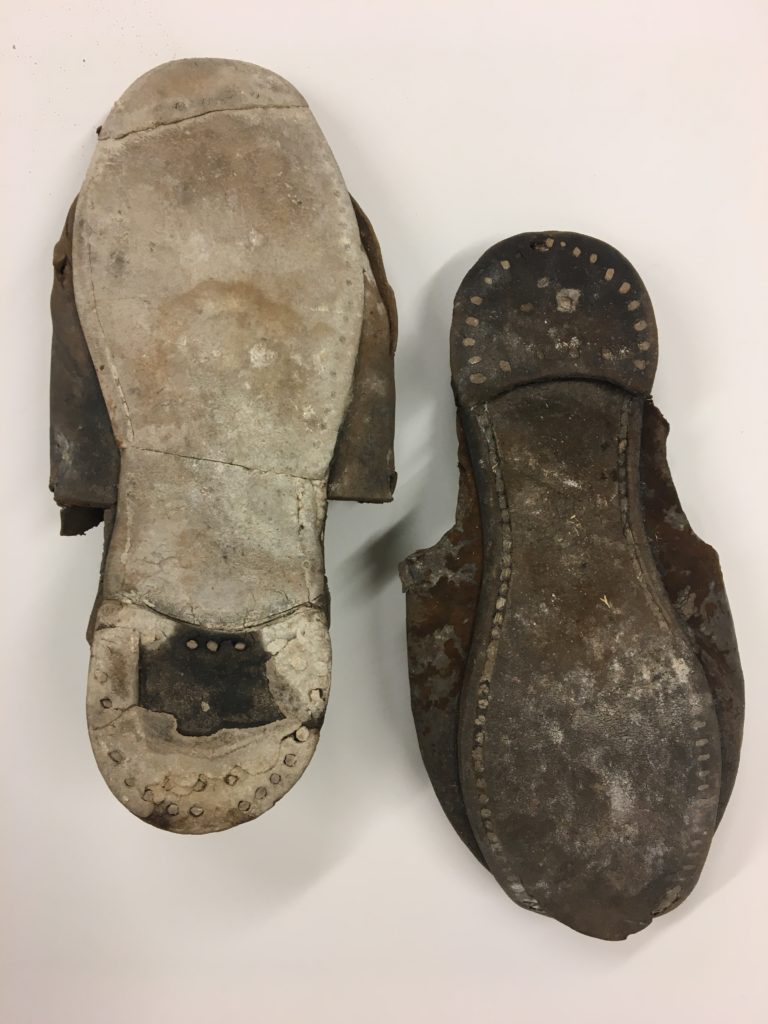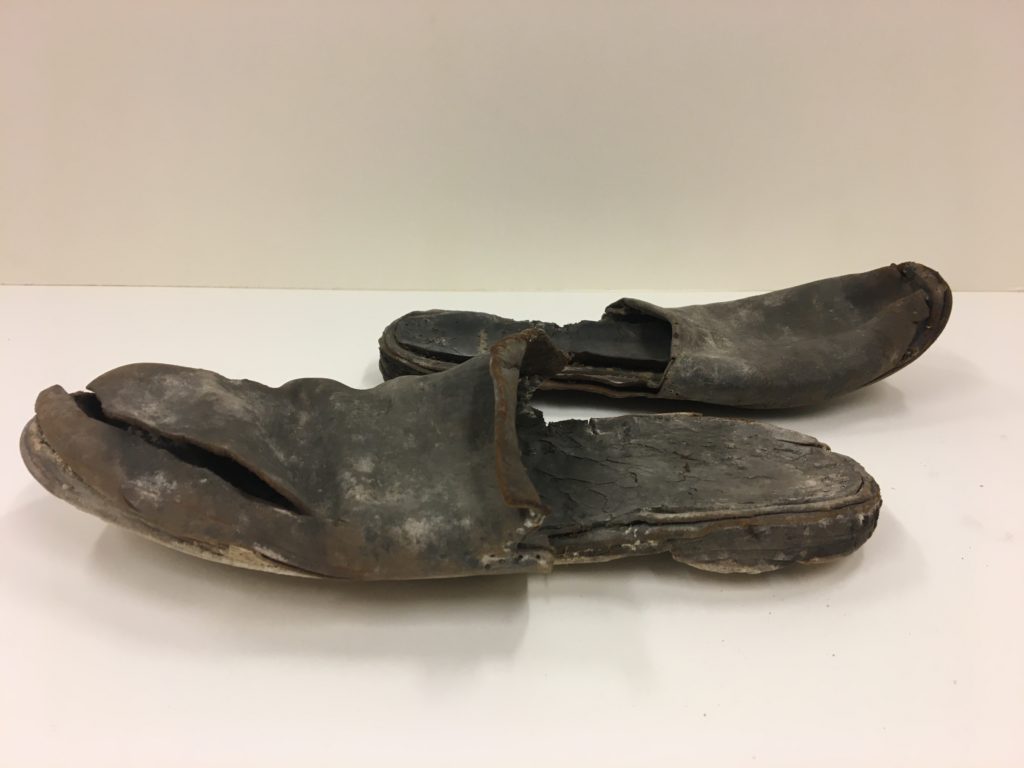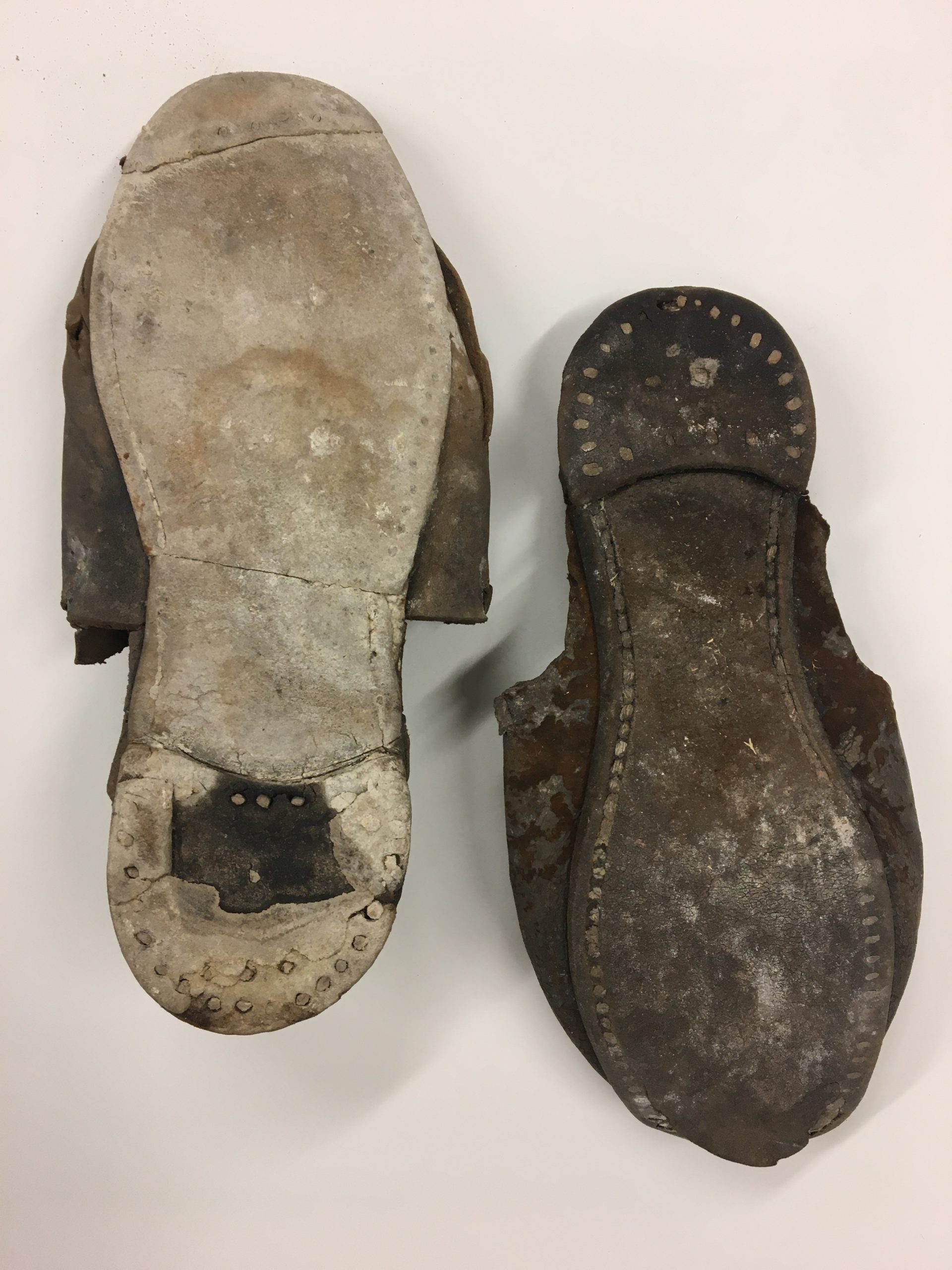Unwritten Stories (Part 1)
During the renovation of the Our Lord in the Attic Museum a few years ago, construction workers made a remarkable discovery. Under the wooden floor in the anteroom, near the fireplace, they found a pair of leather shoes. They themselves paid little attention to it – there were more important things to do at that time – but curator Theo Tienhooven was eager to know more and came across a wonderful practice.
The story continues below the image.

The discovery of the old slippers caused little excitement in the museum. “If it had been a monstrance, there would probably have been more fuss,” says Theo Tienhooven. The shoes ended up in a crate in the attic. Once the dust from the renovation had settled, the curator met them again and turned them into ‘a little project’. It soon became apparent that these were two left shoes, with different sizes. So no pair of shoes.
Fast Dating
A quick dating was difficult, also because the shoes no longer have their original shape. It has clearly been cut. By removing the heel piece, someone had turned an old shoe into a kind of muzzle. The shoemaker had also nailed a lot to the sole. Shoes were precious things; you didn’t just get rid of it, but you always patched it up.
Tienhooven took the slippers to the textile department of the Rijksmuseum in Amsterdam for research. Based on the external characteristics, a date was arrived at around the second half of the nineteenth century. And that while the slippers look considerably older. “At first I also thought: they come from the seventeenth century. I already saw Pastor Petrus Parmentier walking on it in his hidden church.”
For more precise dating, other methods are needed. Until the museum decides to do so, the slippers are waiting in the depot in Amsterdam-Noord. Meanwhile, Tienhooven also contacted curator Inge Specht of the Shoe Museum in Waalwijk. She arrived at the same rough dating, but also pointed to another phenomenon: in the nineteenth century people much more often hid shoes under the floor.
Familiar phenomenon
Especially in England, hiding shoes appears to be a familiar phenomenon. There are even regular scientific conferences devoted to concealed shoes . Theo Tienhooven: “The hidden shoes would offer magical protection against evil spirits and other disasters. Sometimes it was residents who wanted to exorcise something in this way, sometimes it was construction workers who left shoes behind, because they were afraid that their work would disturb the spirits in the house.”
The curator says he is actually ‘too sober’ for these kinds of subjects, but finds the theory intriguing. The hidden shoes are often found near the fireplace, just like in the museum, often accompanied by, for example, a piece of cloth or a cat’s skull. The latter was not the case in the clandestine church. But Tienhooven no longer believes that the shoes were left under the floor completely by chance.
That is because in other places in the Netherlands shoes regularly come out from under old planks. Inge Specht keeps a list of them. In Amerongen Castle, for example, a children’s shoe once came out from under the floor, along with a piece of cloth, a cat’s skull and a brush. In the Groningen station building, workers found a brick-built clog and a whole and a half men’s shoe in a Tilburg house.
Curator Tienhooven keeps his doubts and questions. “Suppose it’s about scaring off ghosts, then that doesn’t seem very common to me for a pastor who lived in that room at the time. But perhaps the shoes were not tucked under the floor by construction workers until later, when the church became a museum at the end of the nineteenth century, or when gas pipes were laid. And maybe they turn out to be much older than we think; then the story is different. Until we have an exact date, it remains conjecture.”


